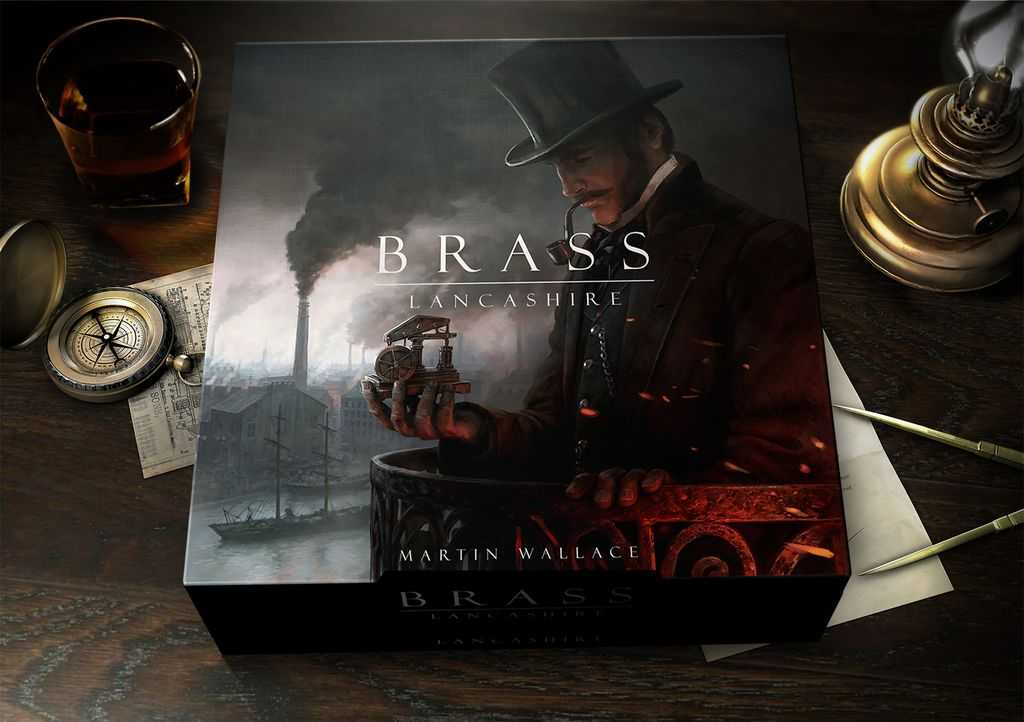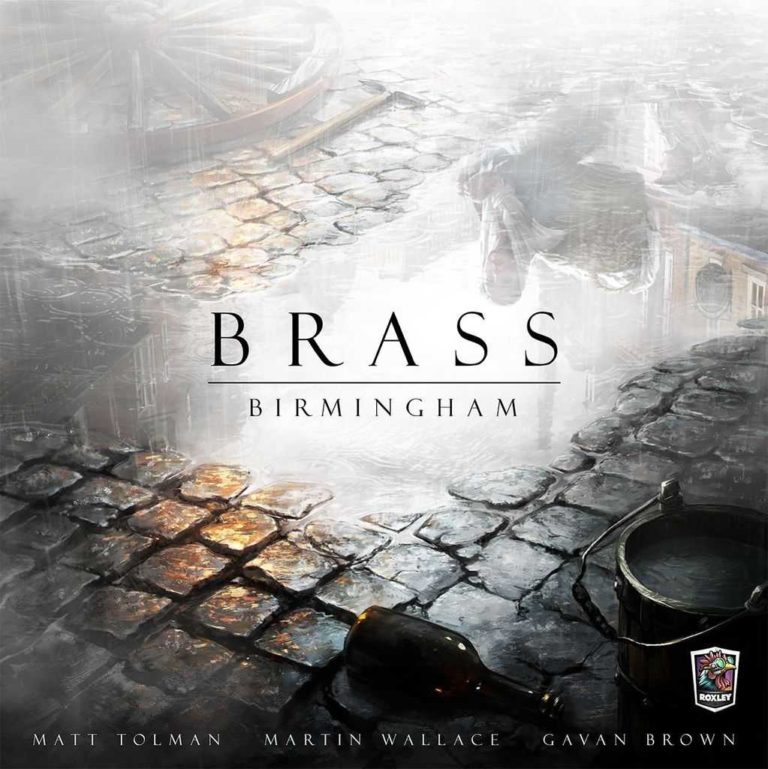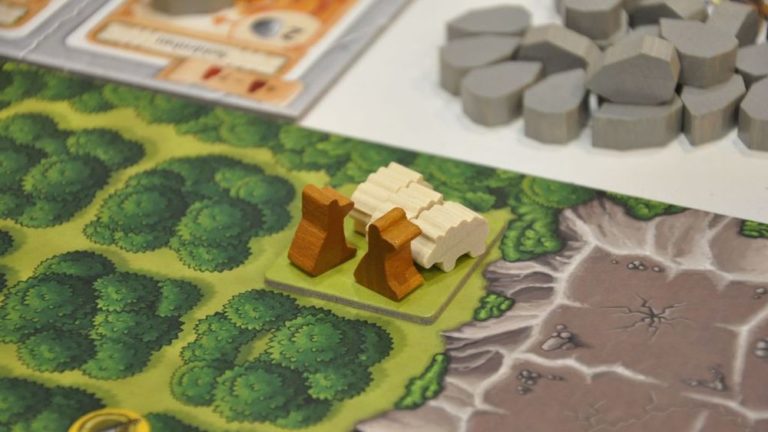Brass: Lancashire Review – A Strategic Board Game Analysis
Brass: Lancashire Review – A Strategic Board Game Analysis
Oh, the world of Brass: Lancashire, a realm where industry blooms and every decision feels like it carries the weight of the industrial revolution on its shoulders! I remember the first time I unfurled the map of Lancashire, and that sense reminded me of my own journey into the rich tapestry that is board gaming. There’s something quite magical about stepping into a game that manages to capture the essence of an era so vividly. Brass: Lancashire isn’t just a game; it’s a time machine that transports us to the smog-filled skies over booming English cities.
Key Points:
- Brass: Lancashire is a strategic board game set in the industrial revolution era.
- The game combines hand management and network building mechanics.
- It offers deep strategic depth and requires careful economic decision-making.
- The game has high-quality components and immersive artwork.
- Brass: Lancashire offers high replay value and different experiences based on player count.
- The game is best suited for those who appreciate hardcore strategy experiences.
In this Brass: Lancashire review, I’ll dive deep into the strategic depths of this modern classic. Not only is this game a staple in my collection, but it’s also one that I’ve spent countless hours dissecting, exploring different strategies, and teaching to fellow enthusiasts. Every session is a new challenge, a fresh puzzle posed by the dynamic gameplay and the cunning minds of my opponents.
Let’s walk together through the cobbled streets of industrial England, as I break down the core mechanics, the brass-charged competition, and the nuances that make Brass: Lancashire a perennial favorite. Whether you’re new to the world of heavy strategy games or a seasoned veteran, there’s much to love and discover within the confines of this board. And with that invitation to journey, let us embark on an exploration of this masterpiece of game design.
The Essence of Brass: Lancashire
When you sit down to a game of Brass: Lancashire, you’re not just playing a game; you’re becoming a titan of industry during the industrial revolution. The essence of this game is in the intricacies of building and leveraging networks, forming fleeting alliances, and maneuvering with a deft touch across the economic landscape. It’s an evocative representation of the cut-throat business world where coal powers the machinery, and iron forges the path to victory.
Overview of the Game’s Theme and Setting
The theme of Brass: Lancashire is where its heart truly lies. The setting is Lancashire, at the dawn of the 18th century, a time of significant industrial growth. Players are cast as lofty entrepreneurs, eager to etch their names into the fabric of history by establishing their industries and networks.
Each player looks across the map, plotting and scheming to construct cotton mills, develop ports, and lay down networks of canals, only to replace them later with the steely sinews of railway lines. This is a game that marries its mechanics so seamlessly with its theme that you can almost hear the churning of engines and feel the grit of coal dust between your fingers as you strategize your move.
Brass: Lancashire seamlessly marries its industrial theme with gameplay mechanics, immersing players in the experience of building industries and networks in 18th century Lancashire.
Core Mechanics and Gameplay
The core mechanics of Brass: Lancashire revolve around an elegant fusion of hand management and network building. Players must carefully manage their hand of cards, each representing potential industries to develop or locations to build.
Decisions carry consequence, as you must balance between expanding your own empire and leveraging the infrastructure your opponents have constructed. The interplay between personal gain and symbiotic gameplay is a delicate dance. And then there’s that genius mechanism of flipping your industries, where successful development leads to flipped tiles, both scoring points and fueling further expansion.
Strategic Depth of Brass: Lancashire
The strategic depth of Brass: Lancashire is, quite frankly, profound. With a game this strategic, you can’t coast on luck; each decision is a chess move, where foresight meets cunning in a ballet of economic warfare.
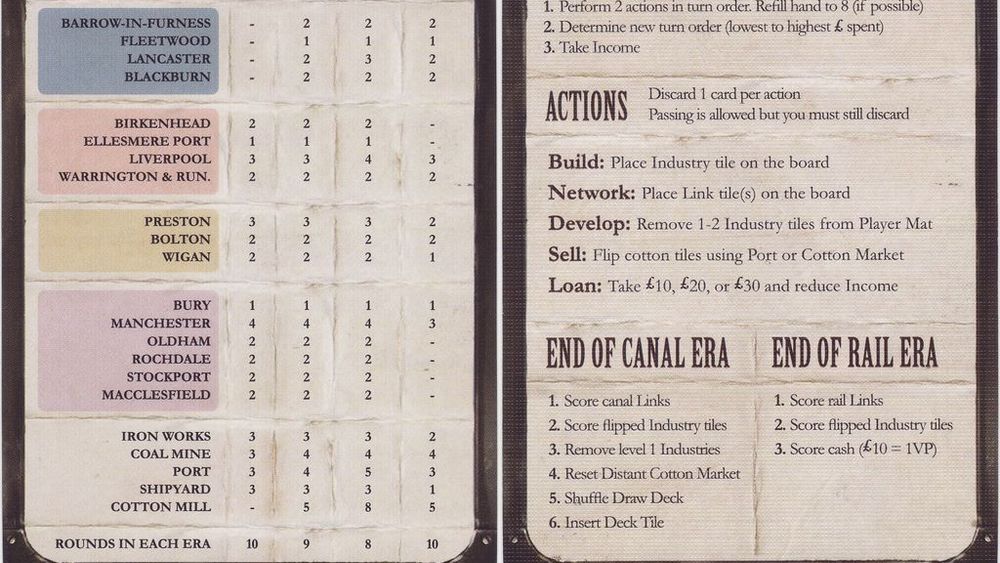
Economic Challenges and Player Interaction
Now let’s talk about the economic challenges and player interaction in Brass: Lancashire. Here, the market is as fickle as the English weather, and the economy is your battlefield. Players are constantly assessing the supply and demand, racing to sell goods but warily dependent on each other’s resources.
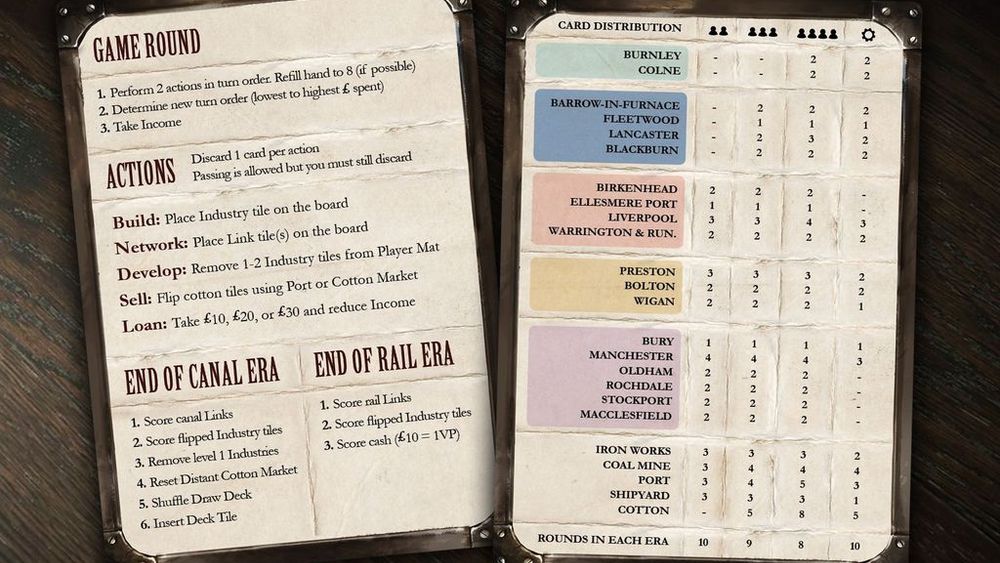
Every move you make on this board is akin to placing a cog in a grand machinery of industry, curiously watching to see how the gears will turn. Player interactions aren’t just about competition; they’re unspoken negotiations, collaborations born of necessity, and sometimes, backroom deals that would make even the most stone-hearted capitalist blush.
In Brass: Lancashire, the economic challenges and player interaction create a dynamic and strategic battlefield where players must carefully navigate the market and engage in unspoken negotiations and collaborations.
Route/Network Building and Its Impact on Strategy
The route and network building in Brass: Lancashire can be likened to the veins of this ever-living organism we call the game board. Crafting an effective network becomes an art form; it’s not just about building routes, but about strategic placement and timing.
A big piece of the strategic puzzle lies in connecting the right industries and markets, developing symbiotic relationships where you can benefit from other players’ actions while keeping your ambitions sharply in focus. The impact on strategy is monumental as the labyrinth of routes conveys not just your goods but also your prospects for victory.
Components and Aesthetics
And as we delve into components and aesthetics, it’s as if we don our top hats and inspect the quality of our mills and ironworks.
Quality of Game Materials
Each piece in Brass: Lancashire feels like it was forged in the fires of industry itself. The game components are no less than what you’d expect from a game of this caliber; they’re robust and weighty, giving a satisfying clink as they’re placed on the board – much like the heft of a well-earned coin.
Each card, token, and tile feels engineered to last and invite the fingers’ touch, with a durability that promises many years of strategic battles and economic conquests.
Visual Design and Artwork
Now let me paint you a picture of Brass: Lancashire’s visual design and artwork. Imagine the lush countryside of England, with its rolling hills interrupted by the rise of industry. The artwork is dark and moody, capturing the historical setting perfectly with its muted palette.
Aesthetically, the game is immersive, pulling your gaze into the board as you lay down your industries. Each card is a miniature canvas displaying landmarks and elements iconic to Lancashire, enhancing the thematic experience. The blend of form and function in the artwork makes it aesthetically pleasing while also serving the clarity of gameplay.
The visual design and artwork of Brass: Lancashire captures the historical setting perfectly with its dark and moody aesthetic, drawing players into the thematic experience while also enhancing the clarity of gameplay.
Complexity and Learning Curve
Brass: Lancashire is not a mere walk in the park; it’s a hike up a steep, strategic incline that tests your mettle.
Understanding the Rulebook
The rulebook of Brass: Lancashire can be, at first glance, as intimidating as a thicket of English ivy. It’s packed with nuances and exceptions that demand your full attention.
However, once you’ve negotiated the dense underbrush of initial rules and gameplay exceptions, you’ll find the elegance in the game’s design shines through. The multi-layered gameplay is a tight tapestry with each thread, each concept, and each exception woven in such a way that, once understood, feels second nature.
First Playthrough Experience
Your first playthrough of Brass: Lancashire might leave you feeling a bit like you’re navigating a foggy London street, uncertain of the turns and twists that lie ahead. Missteps are almost a rite of passage, a series of learning experiences that gradually clarify into a coherent strategy.
It’s in the learning that much of the enjoyment unfolds, like a puzzle whose pieces slowly come together to form a complete view of the industrial revolution. The challenge can be daunting, but the satisfaction of orchestrating a successful round feels like winning a hard-fought battle in the heart of Manchester.
Game Variants and Replayability
Let’s shift gears slightly and consider the game variants and replayability of Brass: Lancashire.
The game’s strategic texture means every play offers a new landscape of possibilities, a different configuration of opportunities, and challenges to navigate. Whether you’re a seasoned baron of industry or a newcomer to the economic arena, the replay value of this game remains prodigious, ensuring that no two games ever feel the same.
Differences in Gameplay with Various Player Counts
Ah, the dance of player count in Brass: Lancashire! Let me tell you, the experience morphs quite a bit when you switch up the number of folks around the table. With two players, it’s like a chess match, each move is a vital cutthroat decision, and the map feels like it’s yours to conquer – or be trapped by. You’re toe-to-toe, trying to outmaneuver your opponent on a condensed battlefield where every route and industry placement can become a cunning blockade.
Scale up to three or four players, and you’ve got an entirely different beast. The map, while still tight, is a buzzing hive of activity, and you’ve got to keep an eye on a myriad of dynamic, shifting alliances and enmities. Opportunities for collaboration increase, as does the pressure to leap onto fleeting chances created by your peers. Suddenly, you’re not just playing the board; you’re playing the people, fostering brief alliances only to betray them later for a surge in points. The game becomes less a duel and more a delicate ballet of shared interests and cutthroat competition.
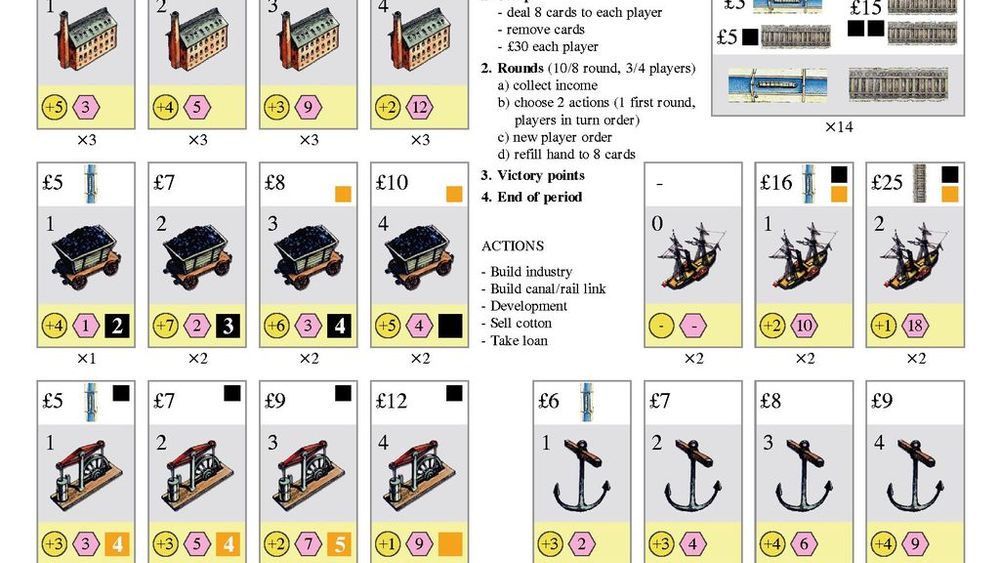
Long-Term Appeal and Game Longevity
Now, the heart of any Brass: Lancashire review must account for its staying power, right? Over time, I’ve come to see this game as a treasure in my collection, one that’s only grown richer with repeated plays. There’s a subtle dance of strategy that unfolds differently each game, making every session a fresh challenge. For example, the decision of when to pivot from building canals to laying rails always feels pivotal – time it wrong, and you’re scuppering your own chances of victory.
Longevity, you ask? This is where Lancashire shines. Every game’s a new puzzle to solve because of the card-driven setup, ensuring that no two games are identically configured. And the challenge? It never dulls! As I’ve observed, intermediate and veteran players keep coming back to fine-tune their strategies, to squeeze out every last point from their network of industries, and frankly, to just enjoy the depth of the economic simulation on display here.
To put the cherry on top, Lancashire’s appeal seeps into its replayability like a good brew into water. Whether I fancy a quick duel or a full-fledged four-player saga, the game scales elegantly, adjusting its strategic landscape with each player count. Sure, it’s more unforgiving than some other games – one calls to mind Brass: Birmingham – but that’s part of its appeal. It’s a game that respects the players’ intelligence and demands they rise to the occasion, time and time again.
The game Brass: Lancashire offers a rich and challenging strategic experience with high replayability, making each session a fresh and engaging puzzle.
Comparing Brass: Lancashire to Brass: Birmingham
Imagine two siblings, one serious and deep, the other creative and expansive. That’s Brass: Lancashire and Brass: Birmingham for you. While sharing a familial resemblance – after all, they stem from the same economic strategy roots – each game presents a different experience suited to varying tastes and moods within the gaming world.
Key Similarities and Differences
Peeling back the layers, you’ll find both games use similar mechanics: there’s route building, economic muscle-flexing, and a palpable tension between collaboration and competition. Yet, the soul of Brass: Lancashire lies in its refined, cutthroat nature. The map, more constricted than its sibling’s, forces players to rub elbows in the industrial revolution – and not always gently.
Conversely, Birmingham offers a more open playground, with a variety of industries and additional resources (looking at you, beer!). It straddles the line between the tight gameplay of Lancashire and a sandbox-style freedom. Birmingham encourages a wilder, more independent strategy while Lancashire entangles you in a complex web of interdependence.
Digging deeper, the smaller nuances become apparent: Wild cards in Birmingham afford an illusory sense of freedom, in contrast to Lancashire’s more deterministic play, hinged tightly on your hand. The strategic landscape of Brass: Lancashire is a battlefield where every scar of industry counts double, every line of transport is a statement of intent.
Choosing the Right Game for Your Group
When the night descends and you have a table full of eager eyes, the choice between Lancashire and Birmingham might very well set the tone for your entire evening. Birmingham is often the go-to for groups that lean toward a slightly lighter, more forgiving experience – with more diverse strategies and a willingness to enjoy the chaos of a less predictable market.
On the other hand, if your crowd enjoys the satisfaction of overcoming tight constraints and engaging in intense player interaction where each decision is heavy with consequence, then Lancashire is your poison. It’s a game for those who revel in the sharp elbows of tight competition and the sweet victory earned by meticulous planning and strategic alliances.
My advice? Know your audience. If they’re newcomers to modern board games – or if you sense any hesitancy toward complexity – ease them in with Birmingham. For the strategy aficionados, the economic enthusiasts, pull out Lancashire and watch as their eyes light up, pondering the intricate web of industries they’re about to weave.
Personal Experiences and Anecdotes
What is a board game but a tapestry of stories waiting to unfold across your table?

Memorable Moments in Gameplay
Throughout my Brass: Lancashire adventures, there are moments I cherish like prized photographs. There was the time I sniped a critical route with my last available action, breaking my friend’s almost-complete network and watching his well-laid plans cascade into chaos. Then I recall the sweet symphony of flipping tile after tile in a single turn, my industrial empire humming with efficiency as opponents looked on in a mix of admiration and disbelief.
But not all memories consist of my triumphs. I remember the gut-punch of betrayal when a trusted ally quietly built over my cotton mill, leaving me stranded with a handful of useless cards and the dawning realization that in this industrial battleground, alliances are as ephemeral as the smoke from the factories.
Strategies That Have Stood Out
In my experience, timing is everything in Brass: Lancashire. The game is a masterclass in understanding not only how to build, but when. Building too early can leave your network vulnerable to predatory plays. Build too late, and you may miss the economic boom that propels your empire forward.
One approach that often sets the table on fire is what I fondly call the “quiet developer.” While others voraciously vie for public routes and connections, this player focuses on internal upgrades and developments. Seeing their calm amid the storm of aggressive expansions is a wonder – and it pays off more often than not as they unveil a tightly run, highly efficient network of industries in the final scoring. Remember, the loudest engine does not always signal the fastest train.
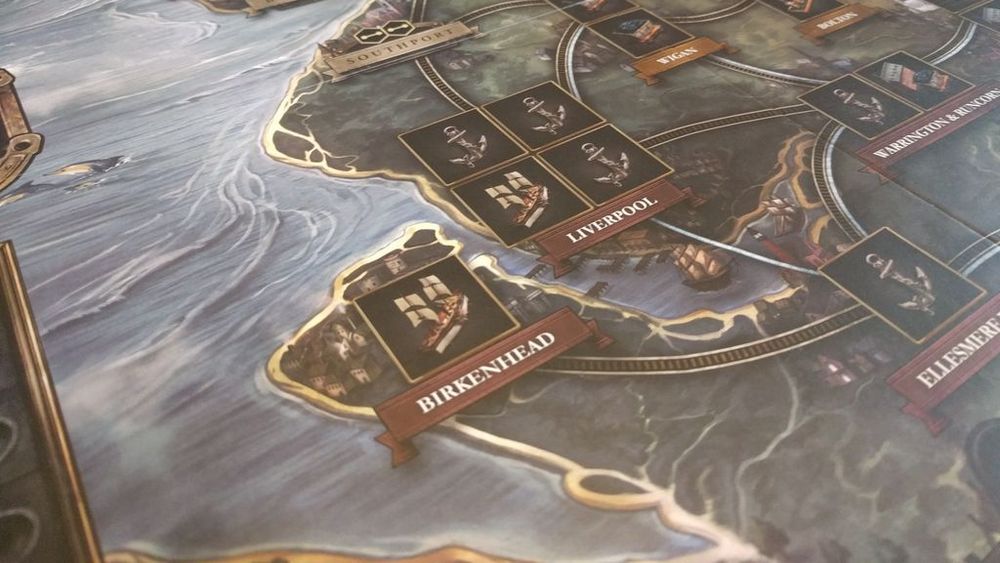
Timing is crucial in Brass: Lancashire, as building too early or too late can leave your network vulnerable, but focusing on internal upgrades and developments can lead to a highly efficient network and success in the final scoring.
FAQs
1. What makes Brass: Lancashire unique compared to other strategy board games?
Brass: Lancashire differs in its tight interdependency between players, a demanding economy that plays on scarcity, and a vivid setting in the industrial revolution.
2. How long does a typical game of Brass: Lancashire take to play?
A typical game of Brass: Lancashire takes about 60-120 minutes, with variance based on player experience and count.
3. Can Brass: Lancashire be enjoyed by casual gamers, or is it geared more towards hardcore strategists?
Brass: Lancashire can indeed be enjoyed by casual gamers, but it is geared more towards those who appreciate a hardcore strategy experience.
4. Is there an optimal number of players for Brass: Lancashire to maximize enjoyment?
The optimal number of players for Brass: Lancashire often depends on the group, but many find it to play best with three or four players for a balanced and engaging experience.
Conclusion
The march of progress doesn’t slow – not in the smog-choked corridors of Lancashire’s industrial landscape, nor in the steady increase of affection I have for this game. The Brass: Lancashire review process has rekindled my admiration for it, a game that has stood the test of time and still delivers a hearty challenge with each play.
Whether new to its enticing weave of canals and railways or a seasoned mogul with miles of track to your name, Lancashire promises a rewarding journey. It’s a testament to the game’s design that years down the line, we’re still discussing its merits, still comparing it to its younger sibling from Birmingham, and still finding joy within its cardboard bounds.
In parting, I’ll leave you with this: some games merely entertain, some educate, and some, like Brass: Lancashire, manage to do both while claiming a piece of your heart. Until next time, let your engines run hot and your cotton sell high. Always here to share another turn around the board, I’m Lucas.
More Boardgame Reviews:
This article uses material from BoardGameGeek and is licensed under the Creative Commons Attribution-Share Alike License.

